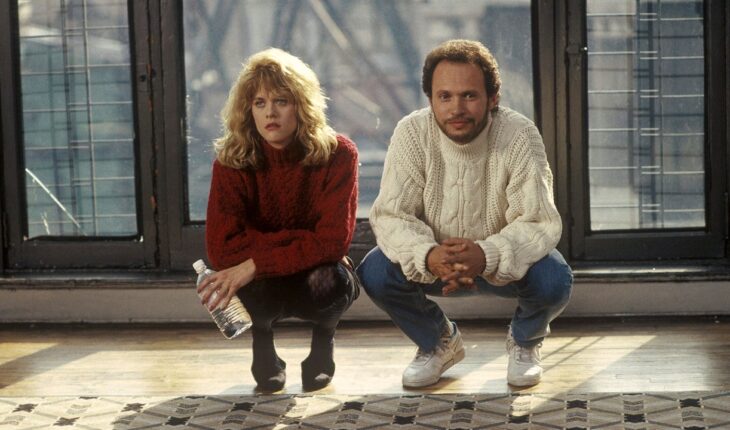In 1989, Nora Ephron changed cinema forever with five simple words: “I’ll have what she’s having.” These words were uttered by a middle-aged woman who had just witnessed what was destined to become the most famous scene in When Harry Met Sally: Meg Ryan faking a noisy orgasm in a busy diner for a stunned Billy Crystal. She was making the point that, yes, women can and do fake orgasms during sex – all the time. It’s easy to see why the audacious scene was instantly iconic. Finally, a rom-com that really understood what it meant to be a woman in the modern world! The film followed two unlikely friends, Sally (Ryan) and Harry (Crystal), as they grappled with the question: could a man and a woman ever really be just platonic friends? Although the film was directed by a man, Rob Reiner, the film was one of the first rom-coms to see the world through a distinctly female gaze, thanks to Ephron’s witty, incisive script.
Soon after, Ephron penned another romantic comedy with 1993’s Sleepless in Seattle. This time, she got behind the camera as director, too. She reunited with Ryan, who was quickly becoming a bona fide queen of the genre, and added Tom Hanks into the mix. This daring rom-com follows Annie, a reporter from Delaware, who falls in love with Sam, a grieving widower from Seattle she hears over the radio. The pair never meet until the final scene.
Despite their limited interactions in the film, the chemistry between Ryan and Hanks leapt off the screen. Ephron returned to the winning formula with 1998’s You’ve Got Mail. A modernised take on the 1940 Christmas classic The Shop Around the Corner, You’ve Got Mail saw Ryan playing Kathleen, the owner of a charming children’s bookstore on the Upper West Side, and Hanks playing Joe Fox, heir to a big box bookstore chain threatening to put her out of business. While the pair are busy becoming sworn enemies in real life, online, they are unknowingly chatting and falling in love.
Ephron’s three rom-coms have gone down in history as a sort of unofficial trilogy. While the films paid homage to the rom-coms of the past, they forged their own path, too, redefining what was possible from the genre in a rapidly changing modern world. They introduced viewers to a new type of romantic heroine – a woman who was messy and opinionated and perhaps even a little nutty, but also loveable and relatable, too. They grappled with distinctly contemporary problems: the digital age, the working woman, love in an age of capitalism. And above all, they featured good love stories – the stuff that fantasies are made of.
Ilana KaplanEmily Assiran
Ilana Kaplan’s new book, Nora Ephron at the Movies, which was released last week, explores Ephron’s work and legacy as a filmmaker. Since her unexpected death in 2012 from leukaemia, Ephron has been remembered best as the architect of the modern rom-com. In recent years, she has even become the patron saint of social media’s Meg Ryan Fall trend. But her work is far more expansive and diverse. In addition to her famous, Instagrammable trifecta with Ryan, Ephron also wrote and directed a range of other dramas and comedies, from the 1986 Heartburn to her final film 2009’s Julie & Julia.
We spoke to Kaplan to get her take on Ephron’s impact on the rom-com and her legacy today. Plus, read on to see an exclusive excerpt from the book.







